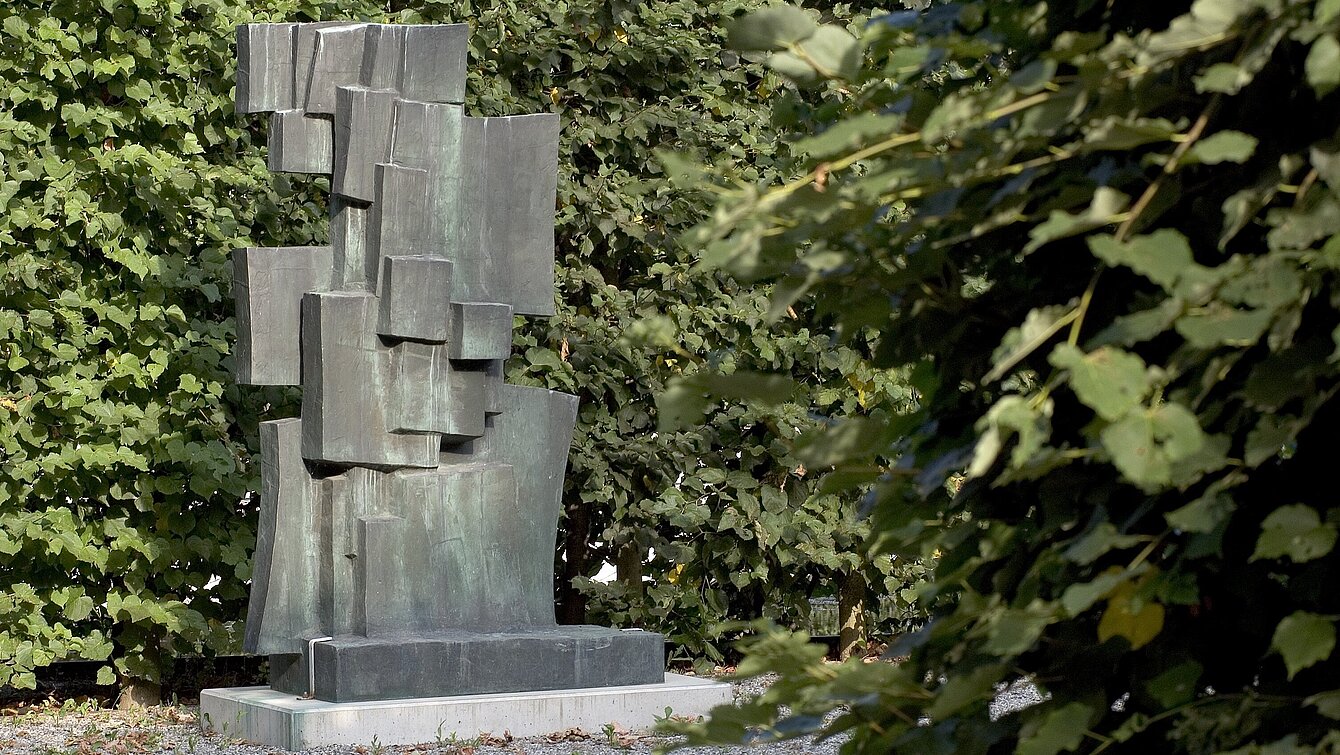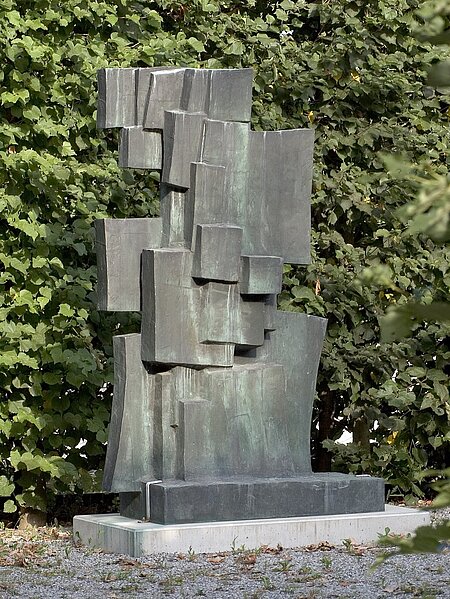One of the leading Austrian sculptors of the 20th century, Wotruba chiefly focused on the human figure in his oeuvre. He was not concerned with portraying its aesthetic beauty, but instead with the search for an origin. This interest gave rise to his static, heavy, tectonic sculptures. He saw the human as an architect and in his works the body can be read as a dwelling and shelter, but also as a prison, dungeon and heavy weight. His sculpture Große Figur für Luzern also contains recognisable human forms, while at the same time the perspective opens up onto something larger and more universal.
Large figure for Lucerne
Fritz Wotruba, 1966/67


Image Credits
Author
Elisabeth Fiedler
Location on map
Position 6
Owner
Fritz Wotruba Stiftung, Belvedere Wien
Artist biography
Show all
About the sculpture
Whilst the title "Grosse Figur für Luzern/Large Figure for Luzern" might indeed still allude to the human figure, at the same time it opens up perspectives of something larger with a more general value. Wotruba’s interest is not focussed on individuality, expressiveness, directionality or the revelation of some personal fate, but rather on lack of direction, equality from all perspectives and continued reduction and precision in terms of archetypal original forms.
Rather than imitating anatomical forms, Wotruba sought fundamental structures through the subdivision of individual elements in order to use them to build a new entity. He also perceived, understood and shaped man as an architectural element. Thus in his work, the body can be read as a home offering security, yet also as a prison, a dungeon conveying heaviness.


















